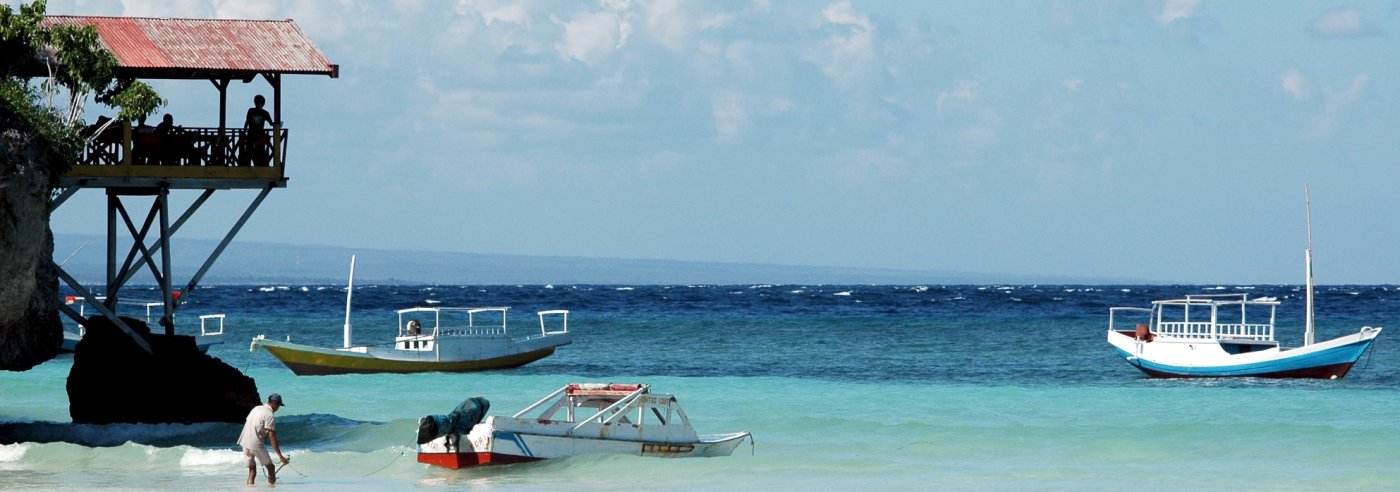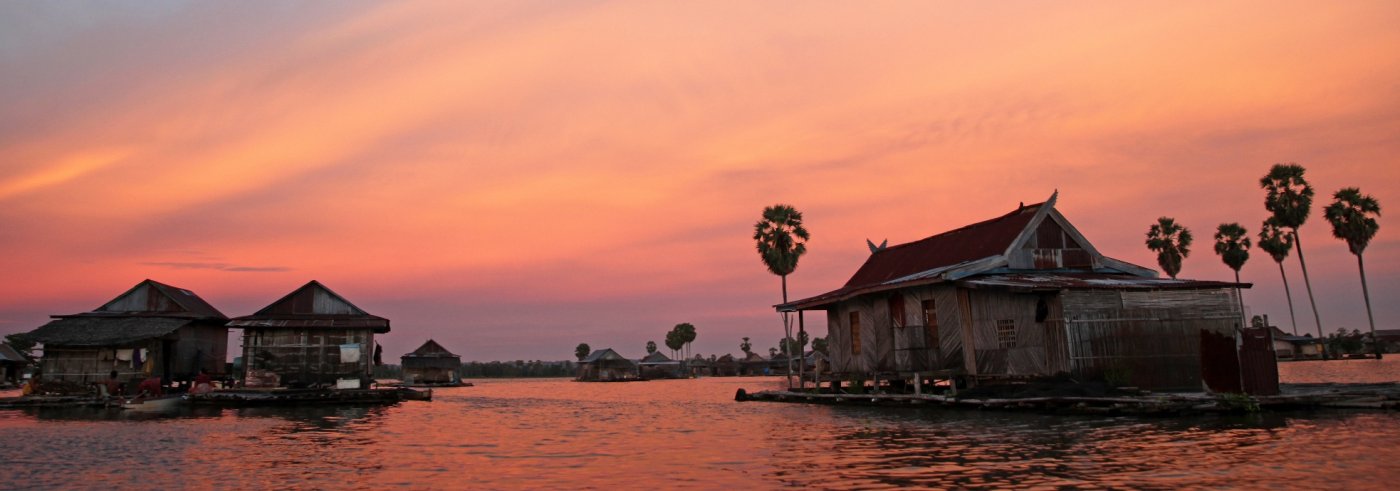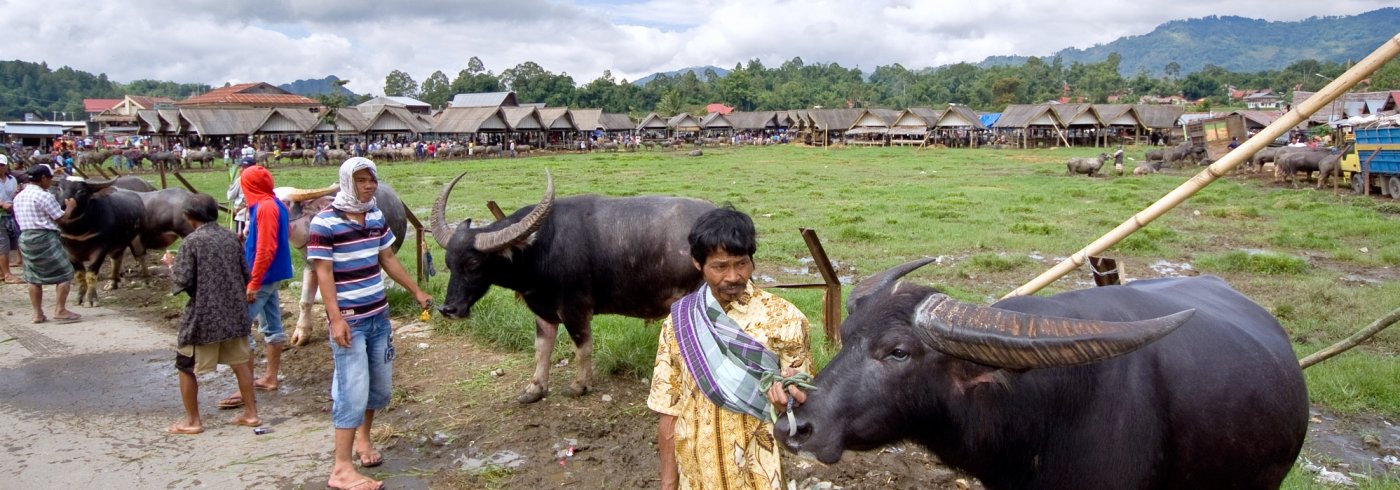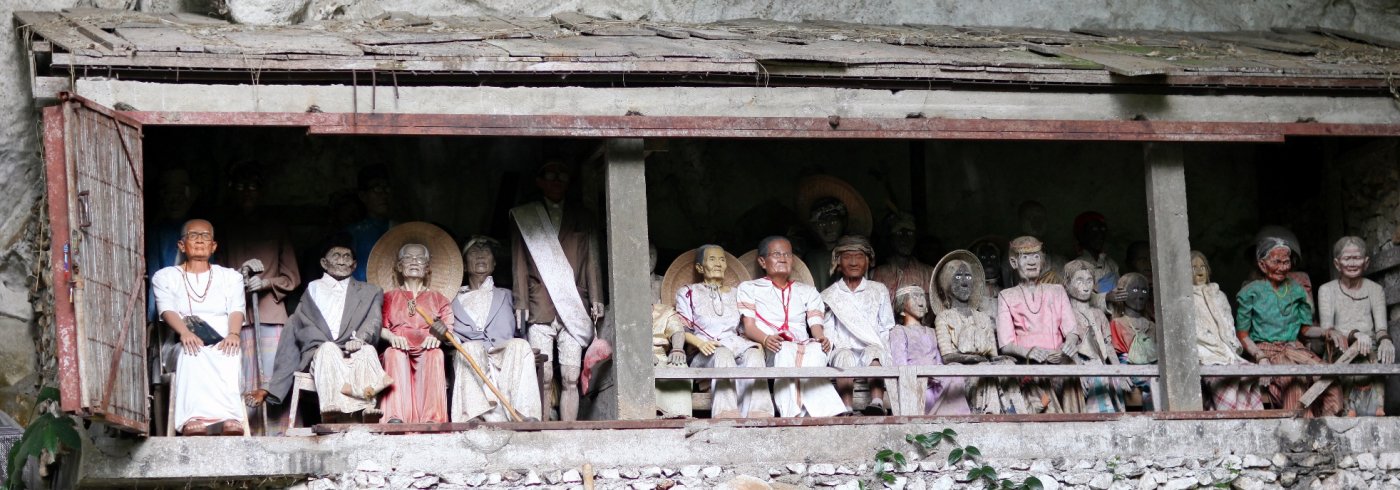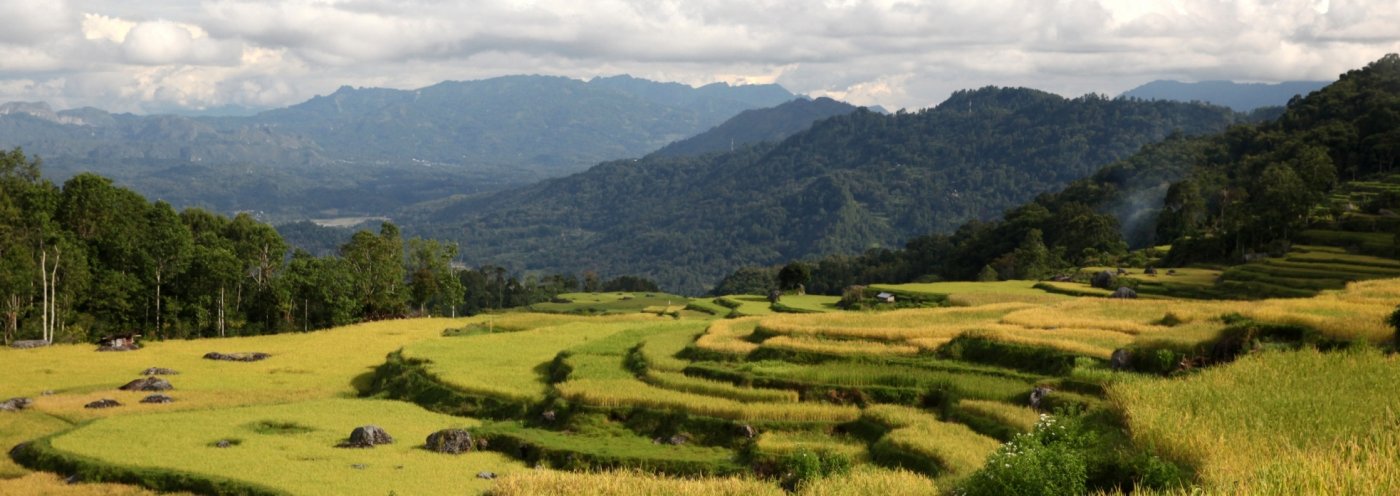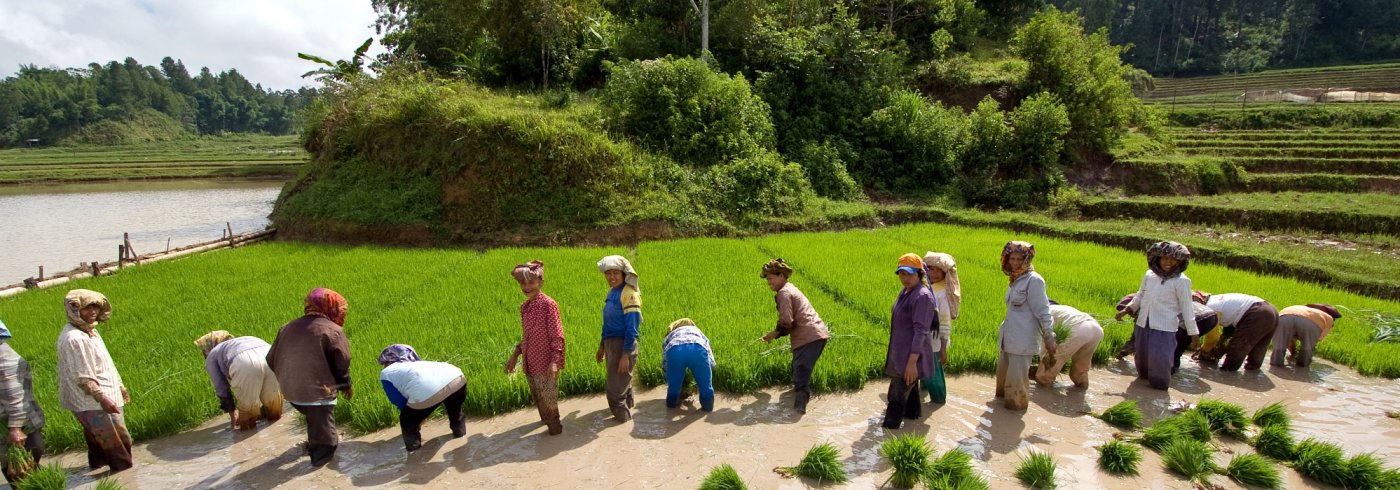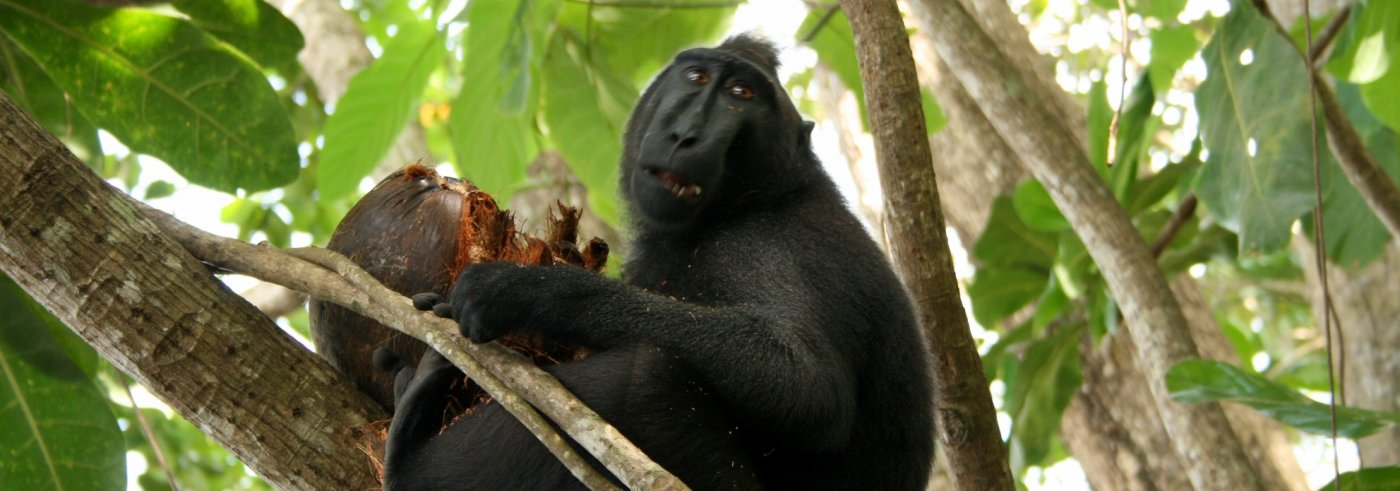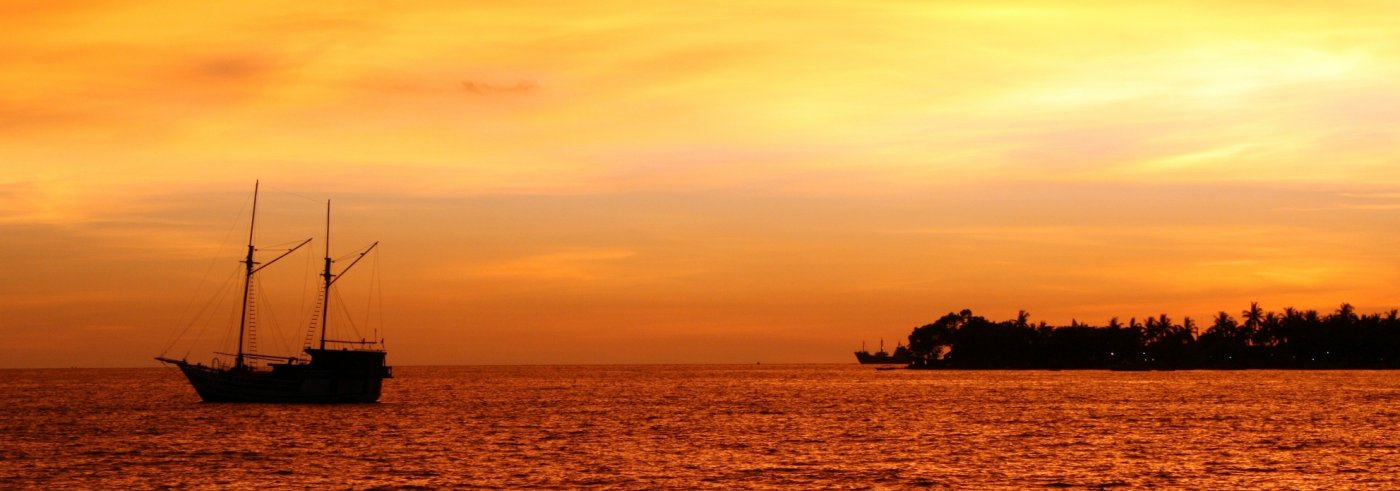Round trip 24 days adventurous trans-Sulawesi
Makassar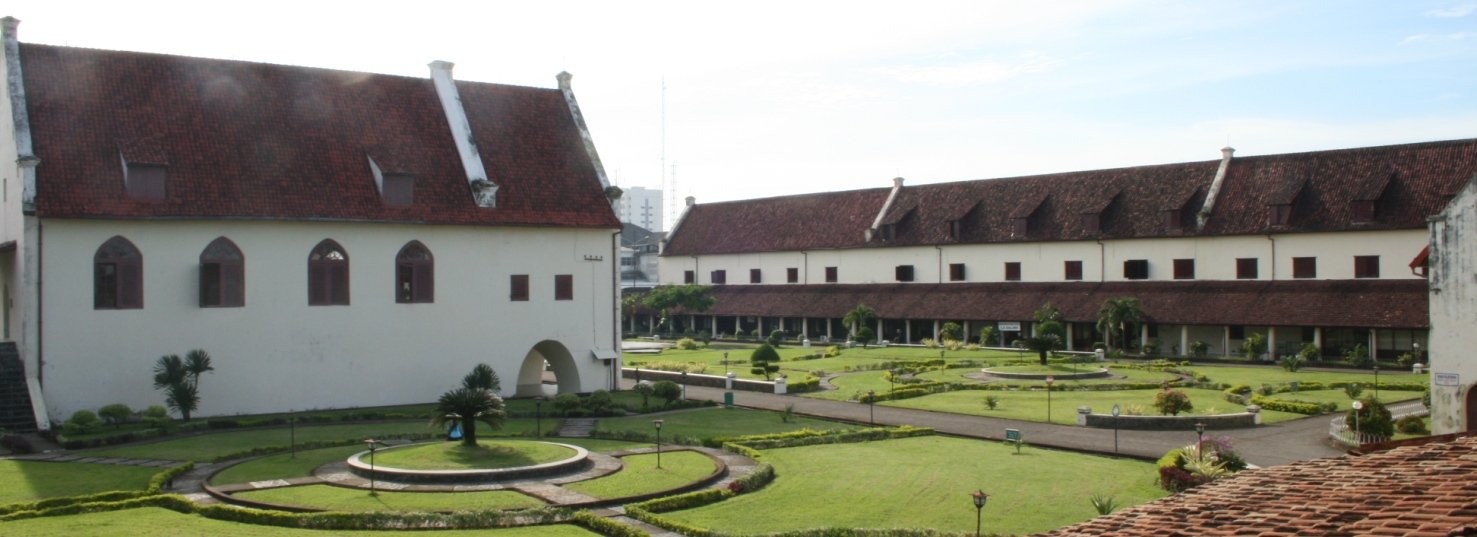 MakassarMakassar, the former Ujung Pandang is the capital of Sulawesi. The fast-growing lively port city is one of the largest cities in Indonesia.There are still many buildings from the colonial period, such as the Society de Harmonie, the Cathedral and the old Court of Justice. In addition to the old colonial districts, there are many new areas with modern malls, which can compete well with those in Jakarta. Due to its strategic location, in the middle of Indonesia, Makassar has a busy port. The city has traditionally been the gateway to Eastern Indonesia. Many boats and flights to Papua and the Moluccas go through Makassar. The city is well worth a visit and is often a good start to a Sulawesi trip. 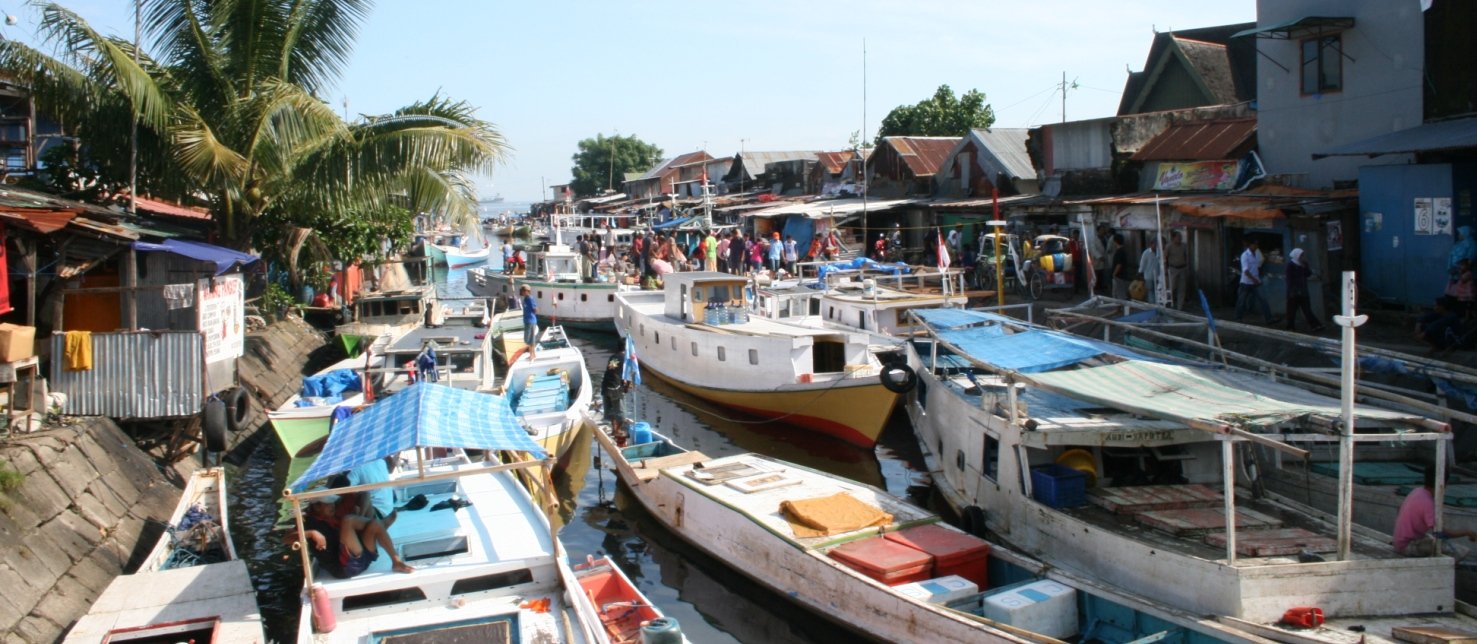 What to see...Fort Rotterdam is a must-see. The old fortress was taken around 1665 by Admiral Cornelis Speelman. The fort houses a church and 2 museums. Next to the Fort is the Chinese district with many beautiful temples and all kinds of Chinese shops where you can go for alternative medicines.The bustling port of Paotere is home to the famous Buginze Phinisi ships that are still loaded by hand. The fishing port and fish market are an experience to experience especially in the morning hours. The fresh fish is then brought ashore and traded on the chaotic market. Don't be surprised if the merchants also offer you fish! In the afternoon a ribbon of dining tables is set up on the famous Pantai Losari boulevard. Many Makassar residents enjoy strolling and eating around sunset. Near Makassar are the Rammang-Rammang karst rocks in Bantimurung National Park. There are also caves with prehistoric drawings. In the weekends, the Bantimurung waterfall is frequented by local day trippers. 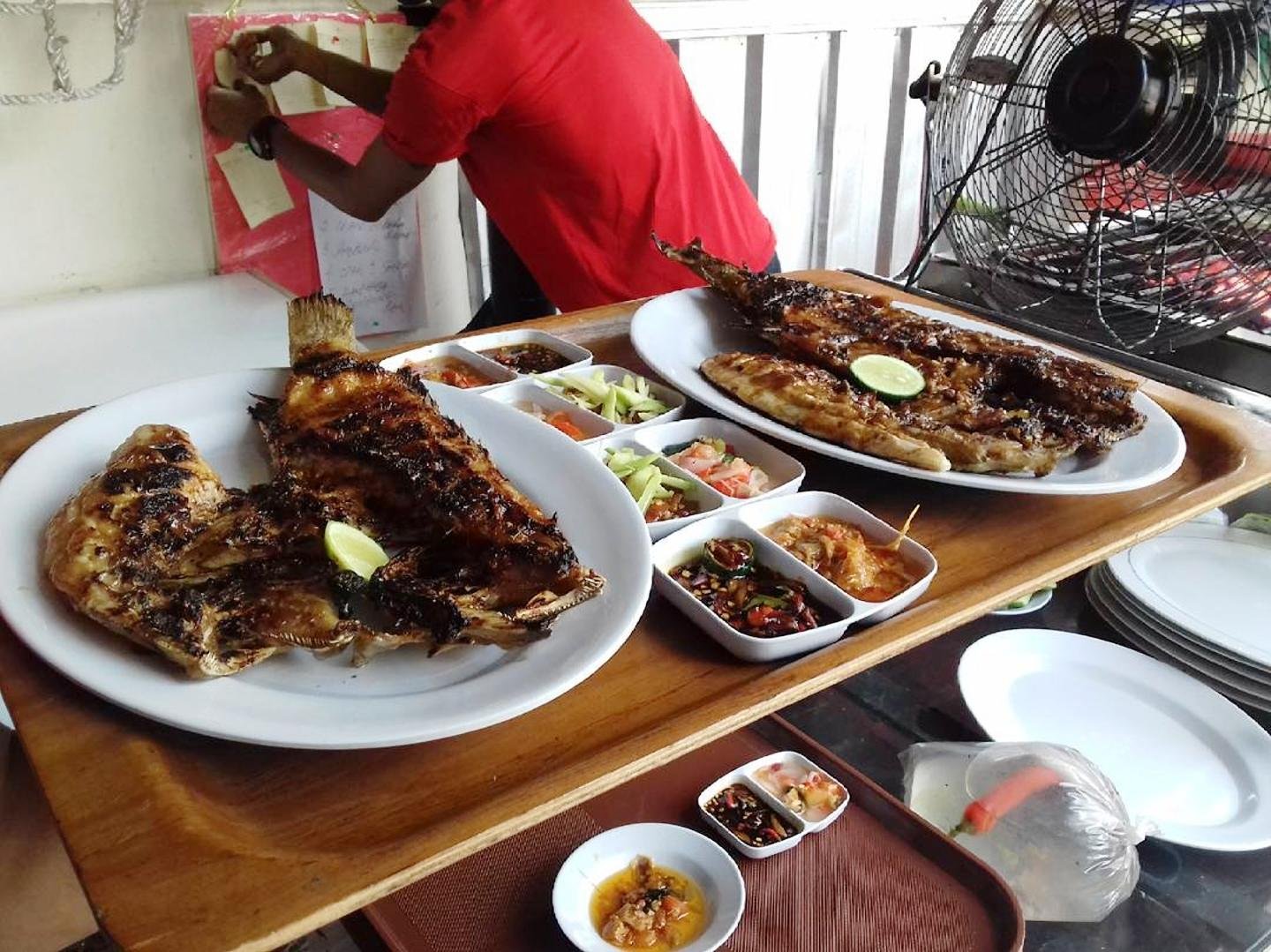 Favoriete restaurantMeer dan 20, maar hier dan de échte aanraders:Restaurant Nelayan aan de Jalan Ali Malakka Het visrestaurant Rumah Makan Nelayan serveert vers gebakken zeevis. De vis kunt u buiten in koelkisten uitzoeken. Deze wordt dan in olie gebakken (goreng) of op de BBQ voor u klaargemaakt (bakar). De vis wordt naar wens geserveerd met ketjap of voor de sambal liefhebber met veel sambal Rica Rica. Niet te versmaden is ook de cumi cumi tepung, in bloem gebakken inktvis. Deze wordt geserveerd met een niet al te pittig sausje. Neem als groenten tumis kangkun (lijkt op spinazie): in de wok klaargemaakt met tomaat, ui en knoflook. Of taugé uit de wok. Het geheel wordt geserveerd met diverse pittige en zoetzure sausje en klein gesneden tomaat met lombokjes. Voor de lunch: Lumpia Sulawesi, een met de hand gedraaide loempia, vers in de wadjan gebakken. Op de Jalan Lasinrang, oftewel Lumpia Street . De loempia's worden geserveerd met sambal en met een niet al te pittige zoetzure saus. Een andere specialiteit van Makassar is krab. Onze aanrader: restaurant Surya aan de Jalan Nusakambangan no 16 Wakatobi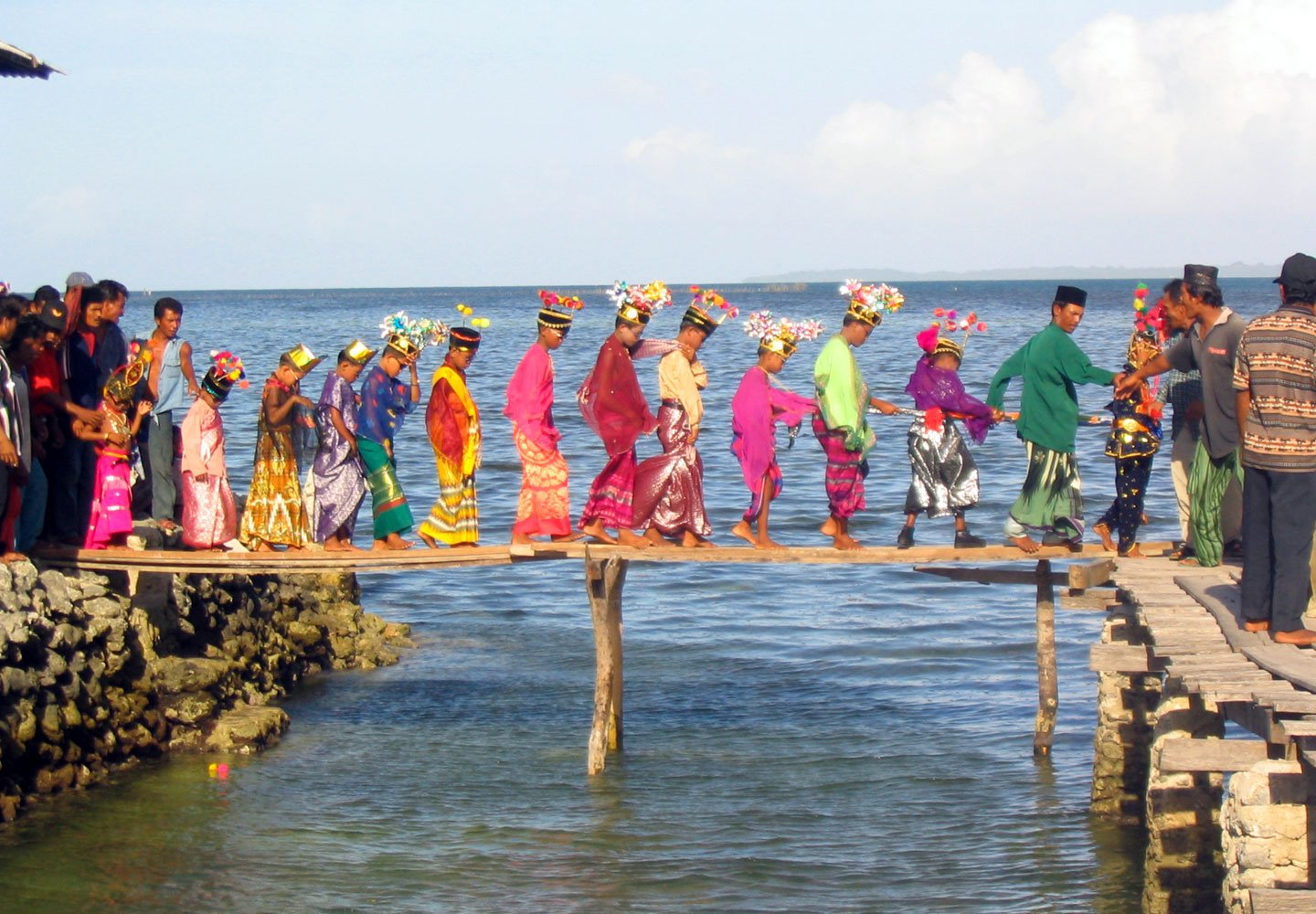 WakatobiWakatobi is an island group in the southeast of Sulawesi. The name is an acronym for the islands of Wangi Wangi, Kalepuda, Tobia and Binongko.It is the area of the Bajo, the sea nomads. Main sources of income are fishing, weaving and boat building. The Bay Villages are built above the water and can be found on Wangi Wangi and Kaledupa. Wakatobi is a beautiful area for snorkeling and especially for diving. Our favorite budget dive resort is the small-scale Hoga Island Dive resort, but it is difficult to reach: you need an overnight stay on Wangi Wangi on the return trip. Hors category is the Wakatobi dive resort on the island of Tobia. In addition to a breathtaking house reef, the super-deluxe resort also has a luxury liveaboard that visits the more distant muckdive sites. The Wakatobi Patuno resort is a great dive resort for the ordinary wallet Wangi Wangi. The islands are interconnected by daily ferries and charter boats. From Makassar and Kendari there is a daily flight to Matahora on the island of Wangi Wangi. The Wakatobi dive resort has two weekly charter flights from Bali. Wangi-Wangi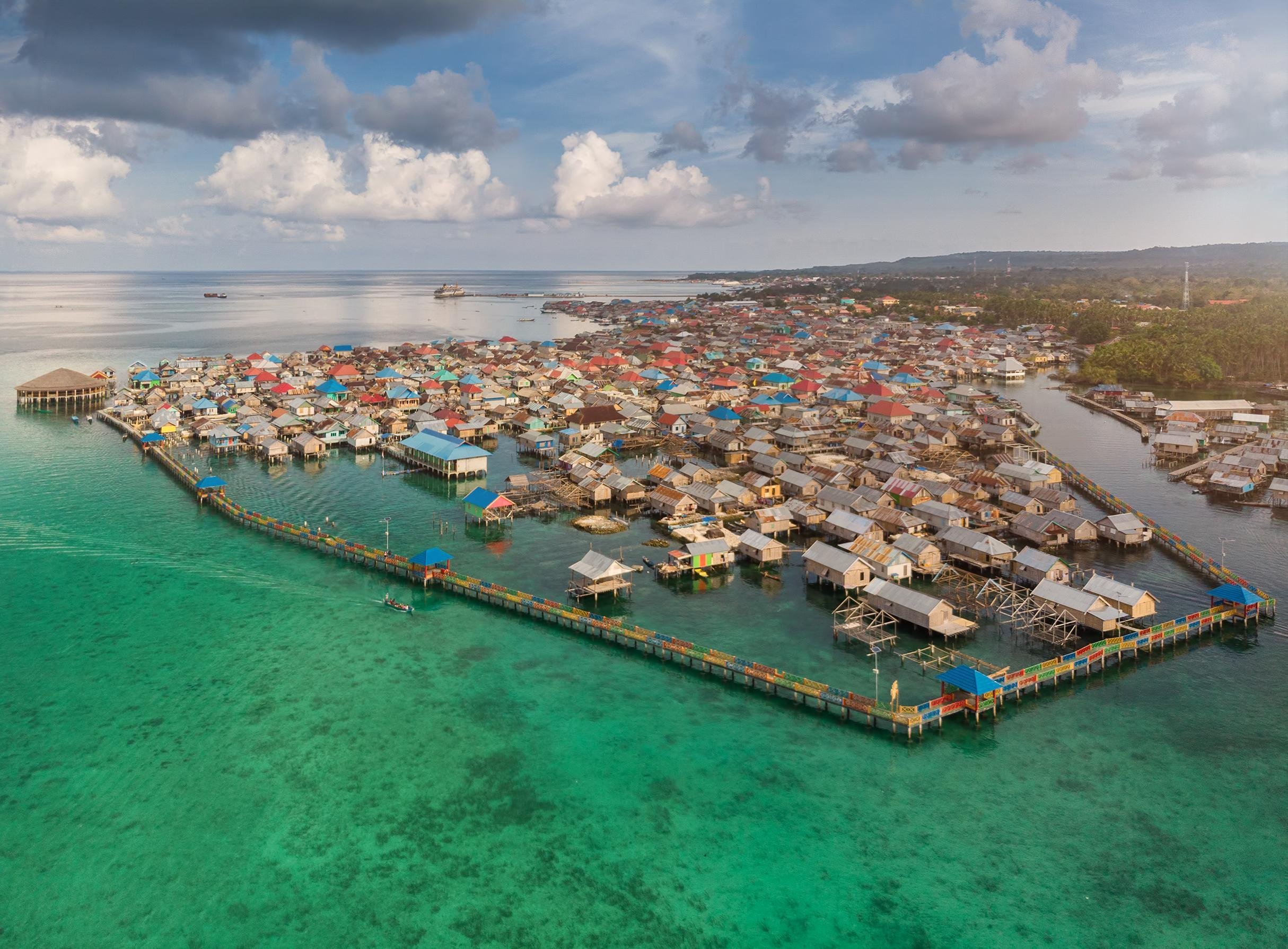 Wangi-WangiWangi-Wangi is the northernmost island of the Wakatobi archipelago. It's pretty much the 'hub' of Wakatobi. Ferries sail daily from Wangi Wangi to and from mainland Sulawesi and to the islands of Kaledupa, Tomia and Binongko. There are also daily flights to and from Makassar via Kendari.Wangi Wangi has some nice sights: the Bajo (sea gypsies) village of Mola, the cave Goa Air Gontamale and the local market are the most important on the island. It is wonderful snorkeling and diving around the island. You can also spot dolphins and (with a bit of luck) whales. Dive spots Wakatobi - Wangi Wangi and Hoga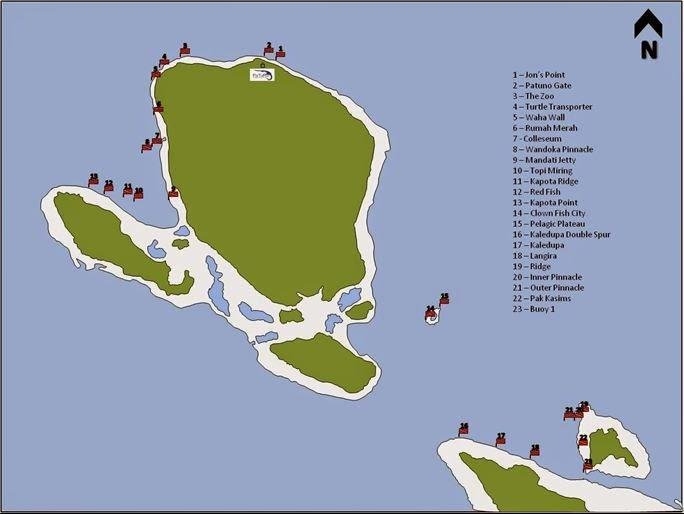 Dive sites Wakatobi - Wangi Wangi and HogaA wide range of world class Wakatobi dive sites are easily accessible from Patuno Resort Wakatobi. The stunning home reef offers fantastic Wakatobi diving and snorkeling, and is situated just a short swim away from the long white-sand beach which fringes the entire length of the resort. A small speed boat can also be used to access the diving and snorkeling sites on the home reef.The Patuno Resort Wakatobi home reef is unique in that it is a very long barrier reef with a steep outer wall plunging to great depths. It boasts enormous overhangs, stunning coral reef topography and a couple of swim throughs. The dive sites around Hoga island are famous too! Hoga island is an hour boat trip from Wangi Wangi. Jon's PointLocated on the home reef this Dive site is characterised by its many overhangs and caves. The deeper dives on this wall bring you to overhangs where hammerhead sharks have been seen to pass. Reef sharks and Schooling barracuda are often sighted here. Many very large sea fans and encrusting coral species cover the wall creating a plethora of different colours.Patuno GateThis home reef dive is situated in just a short boat journey from the resort. The dive begins on the sandy slope on the inside of the barrier reef where after a short swim we pass through a saddle at about 15m where turtles can sometimes be seen. As we pass over this saddle the reef drops away into a beautiful wall covered in an array of huge barrel sponges, soft and hard coral. Swarms of red tooth and Black trigger fish are in abundance here. The reef has many overhangs and swim throughs that house orange cup sponges and sea fans. Reef sharks, Spotted Eagle rays and Barracuda can also be seen here.The Zoo (Waelumu)This dive is at the tip of the long barrier reef which stretches out in front of Patuno Resort Wakatobi and ends in front of the Waelumu village area. The steep wall drops from 5 meters down to about 35 meters where it turns into a sandy slope which continues to extends down into the depths. A great dive where schooling barracuda and big eye trevallies are common, as are passing white tip and black tip reef sharks and dog tooth tuna. The wall teams with a huge variety of gorgonian sea fans of all different colours making it a great habitat for pygmy seahorses. Colemans Pygmys and Bargybanti's have been spotted here. The 5 meter tip of this barrier reef makes for a enjoyable safety stop, where you can take your time enjoying the table corals and panorama of colourful soft corals.Turtle TransporterThis often fast flowing drift dive is a favourite of many guests. A steady current flows along this wall indented with many overhangs and caves where large turtles often rest and shelter from the flow. Regularly turtle numbers can get into double figures with the larger specimens sitting staring back at the approaching diver. Other common seen sights include groups of large eagle rays, schools of large midnight snapper and a 'family' of Napoleon wrasse.Waha WallThis wall is teeming with a huge variety of corals, huge barrel sponges and sea fans and it plunges to depths of 60m or more. This is a great site for passing pelagic fish such schooling tuna and eagle rays. It is possible to experience schools of spawning bumphead wrasse and parrot fish. There are many turtles, trevallies, and myriads of other fish in every direction. There are also many things to interest macro-lovers, if you can focus and tear your eyes away from the colorful bigger picture! Commonly we see a variety of nudibranches, leaf scorpion fish, porceline crabs, and many more interseting critters. This dive is suitable for beginner divers as well as advanced divers as currents here are generally mild or non-exisColiseumThis dives offers a bit of all, coral garden, sand slope, wall. The central part is a very pretty garden that starts at 5m/15ft, slopes down to 20m/60ft and continues deeper as sand slope. Eagle rays, mobula rays and schooling bumphead parrotfish are occasionally passing by on the slope. On the sides the garden is getting steeper, ending on two steep points - with a top around 8m/25ft and bottom more than 50m/150ft. The points are usually swept by current and their walls are full of fan corals, soft corals and lots of fish. Bargibanti pygmys seahorse are not uncommon and Coleman's pygmys have been spotted as well.Wandoka PinnacleFrom the surface this pinnacle doesn't look all that impressive, but once you descend down to 10m and begin to follow the ridge on the side you will be astonished by the variety of hard and soft corals, huge sponges, sea fans and black corals. This site is teeming with fish, and dog-toothed tuna and Big eye trevallies can regularly be found schooling here, along with schooling bohar snappers, schooling fusiliers, Giant trevallies, butterfly fish, turtles, and sometimes eagle rays. The safety stop on the top of the pinnacle provides an opputunity to take photos of scorpion fish and play with the tightly schooling juvenile striped catfishClown Fish CityAs the name implies, this site is home to an amazing concentration of Amphiprion percula as well as several other anemone fish species. Located on Karang Gurita off the south east coast of Wangi-Wangi Island, it is an excellent place to encounter pelagic species and boast 25m+ visibility much of the year. The stronger currents in the area bring in impressive schooling fish.Karang GuritaThis is a great location for an outstanding days diving. This is a stunning coral atoll shaped like an eye. Several fantastic sites can be dived here. The dive sites here encompass walls, coral gardens, plateaus, ridges and slopes. You can see big sponges, a huge variety of sea fans, colourful soft and hard corals, schooling trevallies, barracudas, turtles, rays, reef sharks, or if you're lucky even hammerhead sharks! This is a favourite dive site and guaranteed to be an exhilarating dive!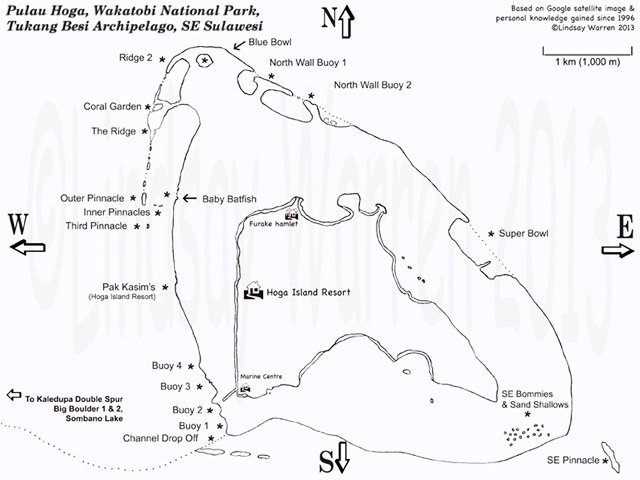 Dive sites Hoga islandThe RidgeThis ridge extends out from the top of Hoga Island's home reef. The area often has currents running along it making this a drift dive. One of the best features of this site is the much loved 'crazy corner' where the current rushes around the tip of the ridge. It is here that large schools of pelagic fish such as giant trevally gather to feast of the even larger schools of fusiliers and triggers that reside here.Inner PinnacleThese two pinnacles lie close to the Hoga home reef. The pinnacles have a ridge at approximately 15m connecting the two. Large schools of Barracuda are often sighted on this pinnacle as well as crocodile fish and large scorpion fish being prevalent on the top of the pinnacle.Outer PinnacleThis is a large pinnacle near Hoga Island with a ridge leading away from it at a depth of 25m. Outstanding corals, big sponges, and a huge variety of colourful soft corals cover the pinnacle and ridge. On this dive you will be surrounded by thousands of fish, from giant trevallies, schooling fusiliers, passing tuna, great barracudas, large napoleon fish and many more. There are also many interesting nudibranches and frog fish for the photographers. This dive also offers the opportunity to look for the very well camouflaged scorpion fish and other critters during the 5m safety stop.Hoga ChannelThis is a great site to visit at high tide when it offers great visibility and an abundance of fish, against a backdrop of spectacular coral. As it is a channel fish come to feed here at high tide as the currents bring plankton to the area, and other fish use it as a highway. This a spawning site for snapper especially at full moon, and we commonly see schooling barracuda, trevallies, napoleon wrasse, bumphead parrot fish along with many more smaller fish in large schools. This is one of the favourite sites around Hoga island.Sengkang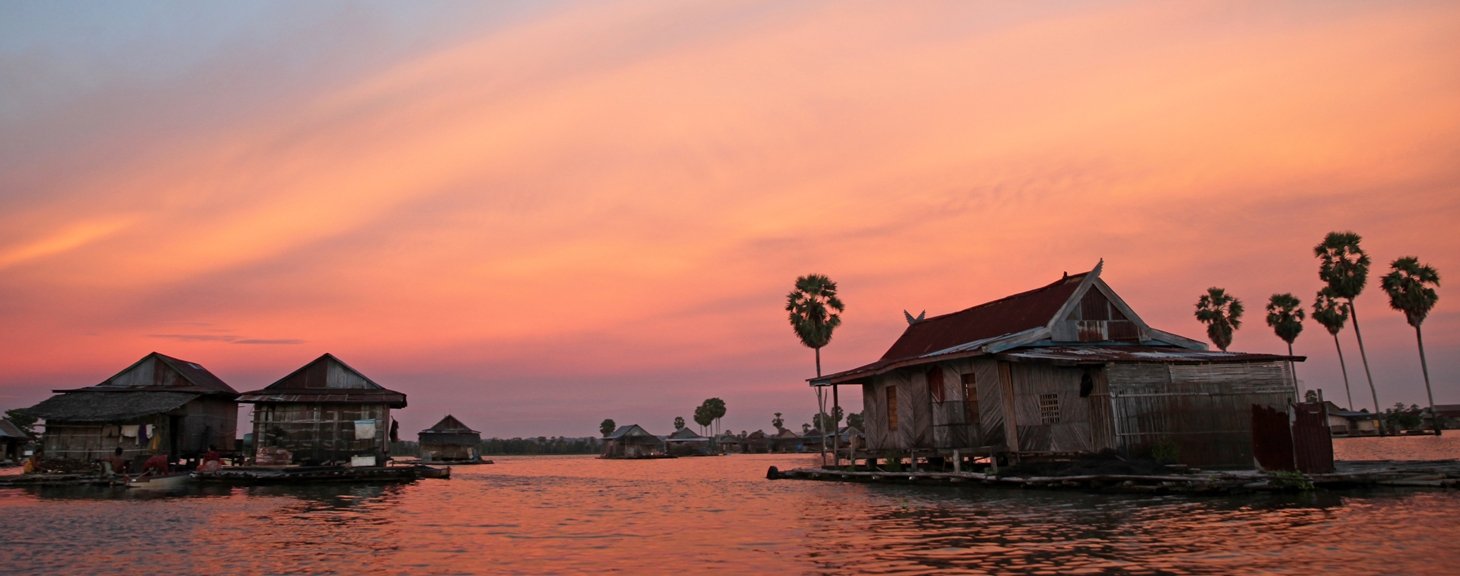 SengkangSengkang is a medium-sized town located in the former Buginese kingdom Wajo. A friendly Moslim town with many big mosques. From Sekang we have a nice view over Lake Tempe. This is a shallow lake; During a long period of persisting drought the lake dries up. On the lake we’ll find the floating villages of the fishermen. This area is also famous for its colourful Buginese silk. Around Sengkan you’ll find many traditional silk weavers.Sights to see: By motorized canoes you can make a trip on Lake Tempe. You can do this in the late afternoon during sunset or in the morning. Along the river it’s pleasantly busy. Children are playing on the riversides, Buginese women do the washing. Hanging bridges cross the river. We literally sail along daily life of the Buginese. We can berth to see the watermelon fields. We also visit one of the floating houses where you can have coffee or tea with a fried banana. The lake is a natural reserve, full with hyacinths and reed. It’s a nesting area for about 30 species of water birds. In Sengkang you can also visit local cottage industry: the Buginese silk weaving. There are often small shops where you can buy some. Rante Pao - Toraja RantepaoRantepao is the 'capital' of Torajaland. This is the starting point of all your excursions to the Torah villages and the mountains.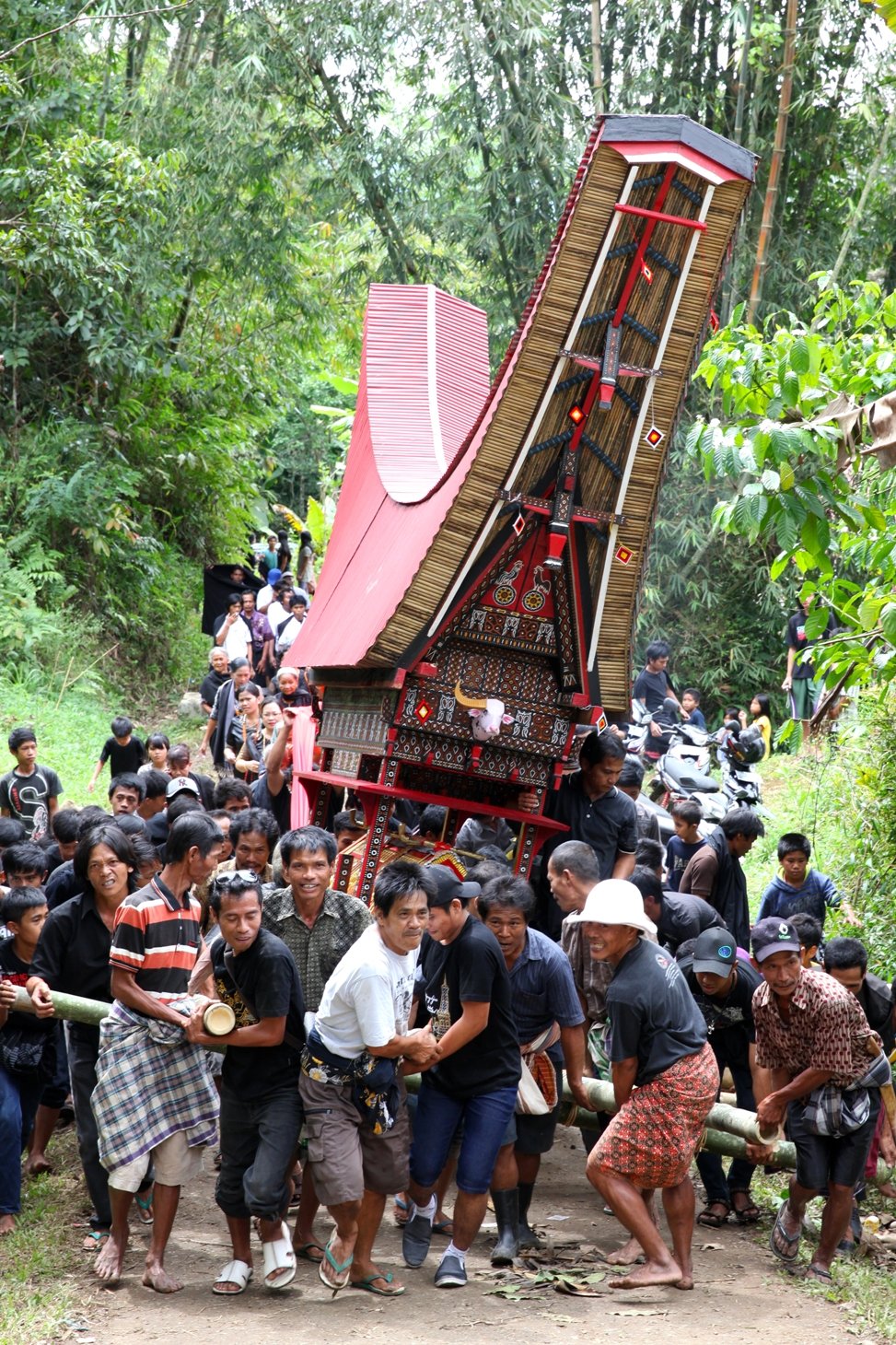 Tanah TorajaToraja, or Tanah Toraja is also called the land of the Heavenly Kings. Here, in this part of South Sulawesi, live the Toraja people or people of the mountain. A Christian population, that still follows the rituals and ceremonies of their ancestors, the Aluk Tu Dolo. Toraja is not only known for its mysterious funeral ceremonies but also for its stunning nature. It’s because of its high altitude a fertile area. Besides rice fields and bamboo forests there are many plantations. Coffee, cacao, vanilla and cloves grow here abundantly. The typical traditional houses (Tongkonans) with their saddle roofs are still built in the same way as centuries before. And their funeral ceremonies are still very impressive. To reach eternal life there has to be held a ceremony before. Dependent on the deceased family’s wealth this may involve an important number of sacrificed pigs and buffaloes. The whole community joins the ceremony, which can sometimes take a full week.Sights to see: Those who visit Toraja will experience wonderful nature and interesting culture, unique in the world. We still find a lot of authentic villages in Toraja with beautiful colourful painted Tongkonans. Many cliffs with wooden caskets hanging from the side, coffins of which some date from the animistic period. The Tau Taus stand in the balcony of the tombs to represent the dead and protect their remains. A Tau Tau is a wood-carved effigy of the deceased. Try to find out about the secret of the baby tree: in Suaya stands a centuries old tree, where young children who die before they started teething are placed into a hollowed out space in the trunk. Funeral ceremonies are held throughout the year. You’re always welcome. But these ceremonies are not available on demand... Your driver and/or guide will inform you about a coming ceremony. Please bring a small gift when you attend a ceremony. PLEASE NOTE that part of the ceremonies is the slaughtering of buffaloes and pigs! This is still done in their traditional way, which not directly corresponds with our Western customs. You’ll also visit villages like Sa’dan where the Toraja women weave the traditional ikat. It’s a particularly suitable area for walking and hiking. You can go for a few hour walk, a day, but also do a multiple day trekking. In that case you will stay overnight at a local people’s home. The trekking goes through authentic villages and along beautiful rice fields. A trekking through the nature and culture of this exceptional and unique small part of Indonesia. You can also go rafting for a day or several days on the river Sa’dan. Try the Pa’piong dish during your stay in Toraja: an in bamboo prepared Toraja dish. And of course it goes together with a bamboo mug with balok, palm wine from the eagle palm. Pendolo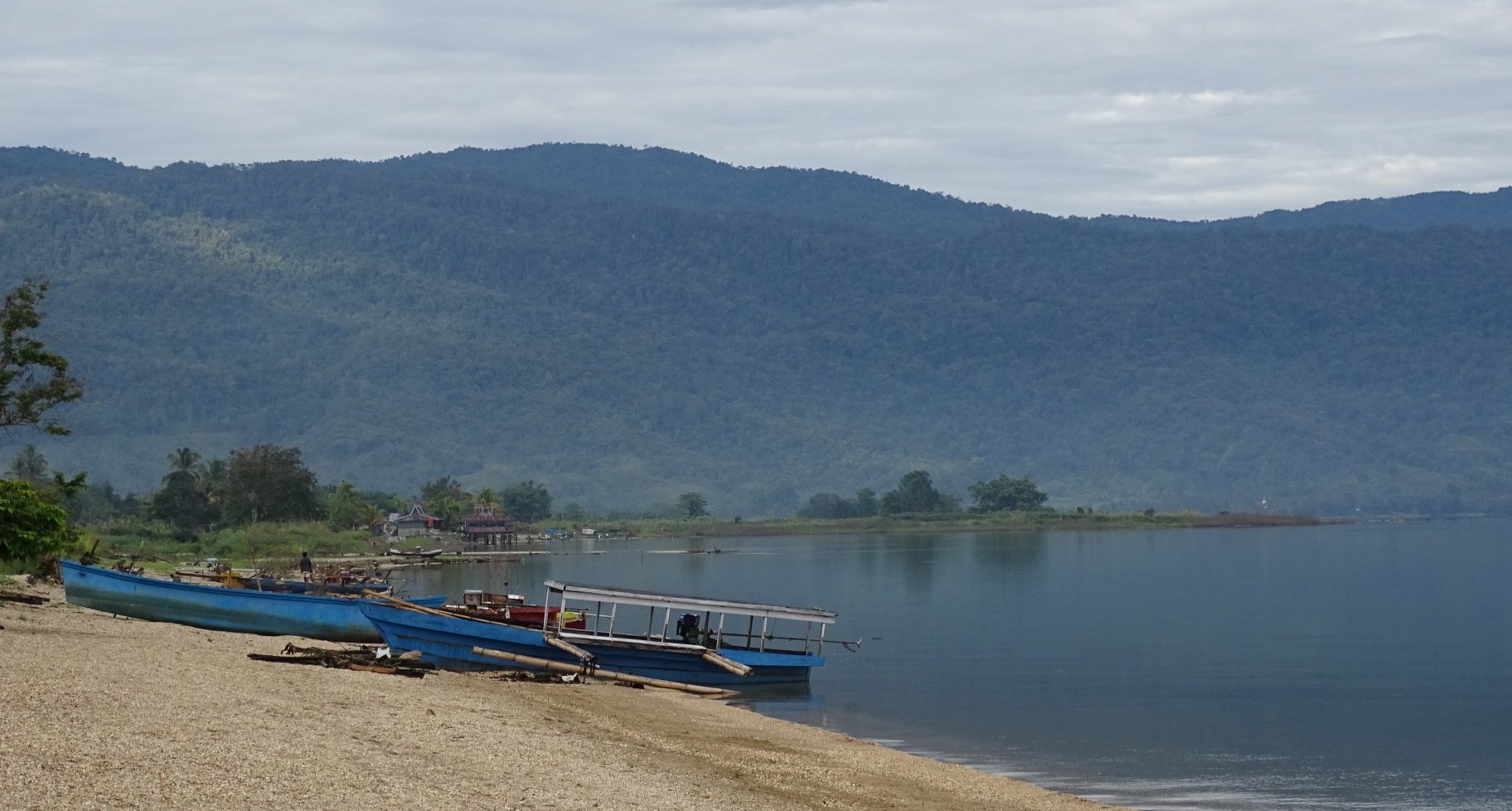 PendoloThe village Pendolo is located souh of Lake Poso in central Sulawesi. The village in itself does not have much to offer to Western tourists. We regularly use one of the simple accommodations in Pendolo on the way from Tanah Toraja to central Sulawesi. This route takes some 8 hours including lunch and photo stops.Tentena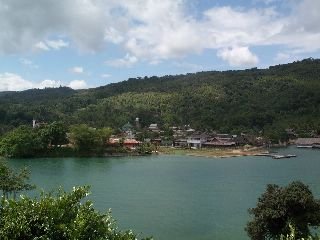 Tentena and lake PosoTentena is a small town near the northern tip of Lake Poso. Where the Poso River empties the lake, the Pamona Bridge connects the two sides of Tentena.Tentena is considered the starting point for many excursions in the region, for example to the caves of Pamona, the waterfalls of Salopa and Sulewana, the Lore Lindu National Park and Lake Poso. The recently discovered Saluopa waterfall consists of jungle-lined cascades interrupted by waterfalls and has a natural pool. Near the waterfall are some transmigration villages, most of which are Balinese. Complete with temples you imagine yourself here in Bali. Lake Poso is located in the southern part of central Sulawesi, Indonesia. The lake is 515 meters above sea level. It takes advantage of the cool mountain breeze resulting in mild tropical days with cool nights. The lake has warm and crystal clear water. During a boat trip on the lake, the captain will always throw some coins in the water to appease the dragon of the lake, the Indonesian cousin of the Loch Ness monster. The region is an unexplored and quiet area, with few tourists. According to local legend, here heaven and earth were connected by a rope. On the eastern shore of the lake is the sandy headland Tando Bone, where our favorite Tanda Bone resort has several wooden lakeside bungalows. Doda, Besoa valley, Lore Lindu national park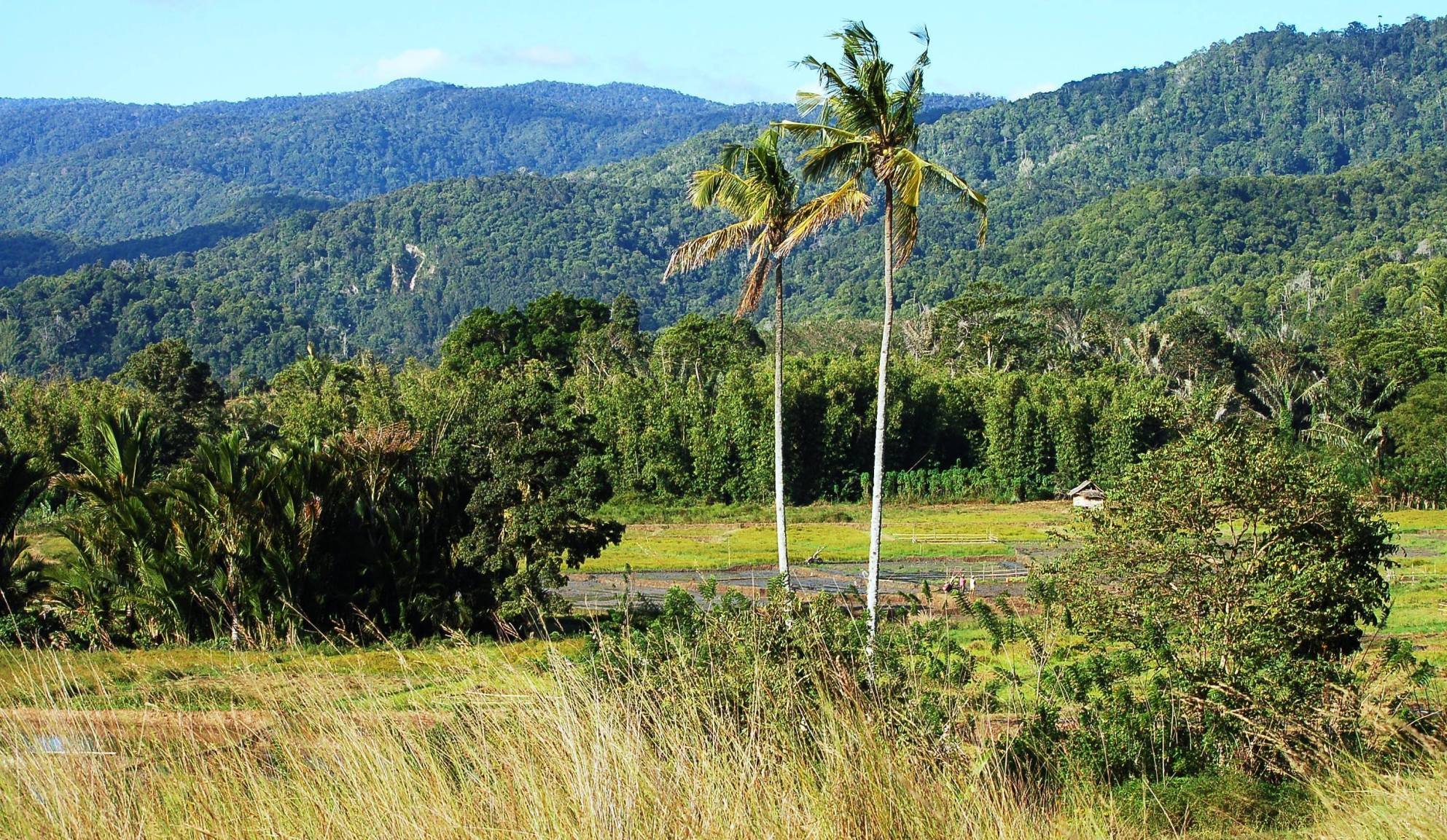 Doda, Besoa valleyThe Besoa valley borders the national park Lore Lindu. From Doda you can make an excursion to the megaliths in the Besoa vallei or go for a drive, walk or trekking through the beautiful nature of Park Lore Lindu. Lore Lindu a great area for birdwatchers.Palu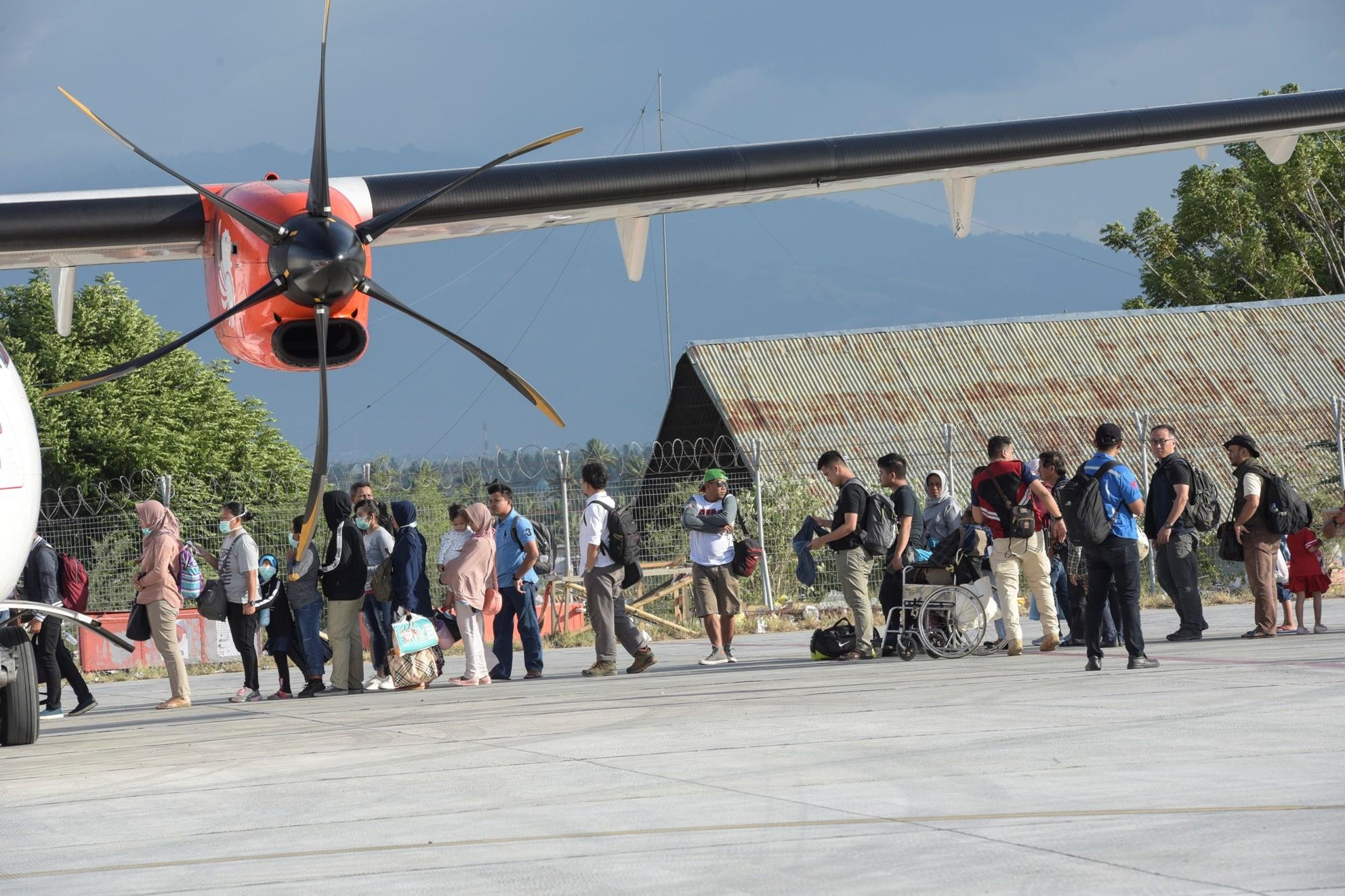 PaluThe city Palu hasn’t got anything to offer to tourists except for the airport.Garuda flies from Palu to Makassar (and then further to Manado) and Wings air to Makassar and via Luwuk to Manado. The airport is at about an hour drive from the Prince John resort in Dongala. Manado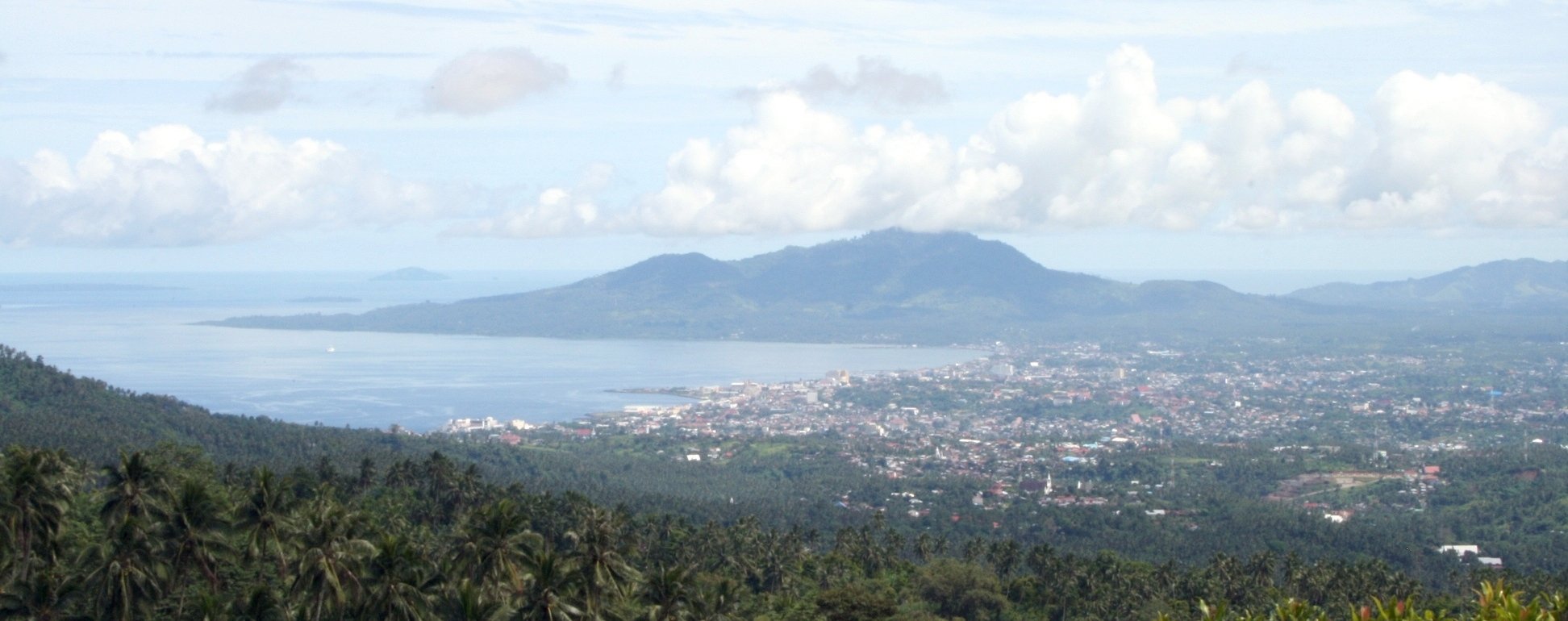 ManadoManado is the capital of North Sulawesi and counts over a half million inhabitants. It’s the perfect base for trips to the Minahassa mountains, Tangkoko jungle, but mainly known for Bunaken national marine park.Lembeh strait and the island Bangka can also easily be reached from Manado. The city itself hasn’t got much to offer. Animal lovers’d better not go to the market. People from Manado eat anything with 4 legs. On the market they sell dogs for consumption… Tomohon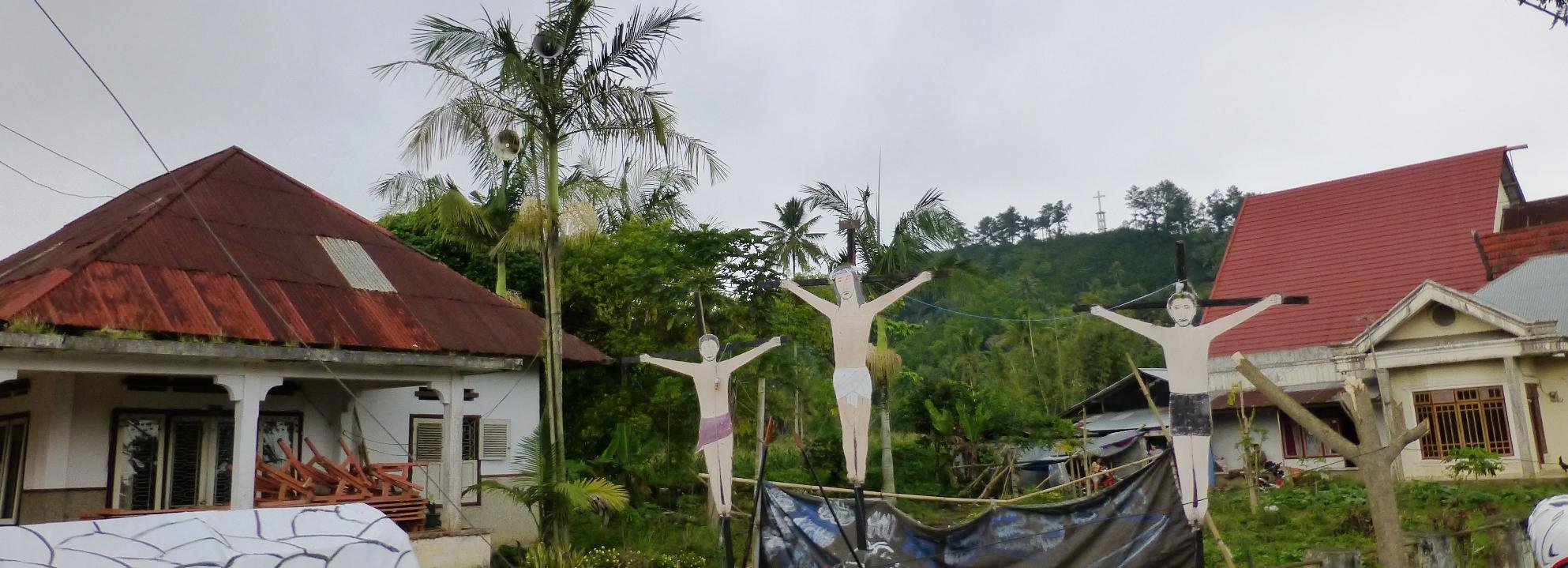 TomohonTomohon is a city at about 1,000 meters above sea level in the Minahassa highlands. It is relatively cool and the starting point for the tours in the Minahassa. The majority of Minahassa people practice strict Catholic beliefs. In the weeks around Easter you will see countless crosses along the roads and in the villages. Because of the cooler climate, a lot of fruit and flowers are grown in and around Tomohon. Every year, in August, the Tomohon Flower Festival is organized.Donggala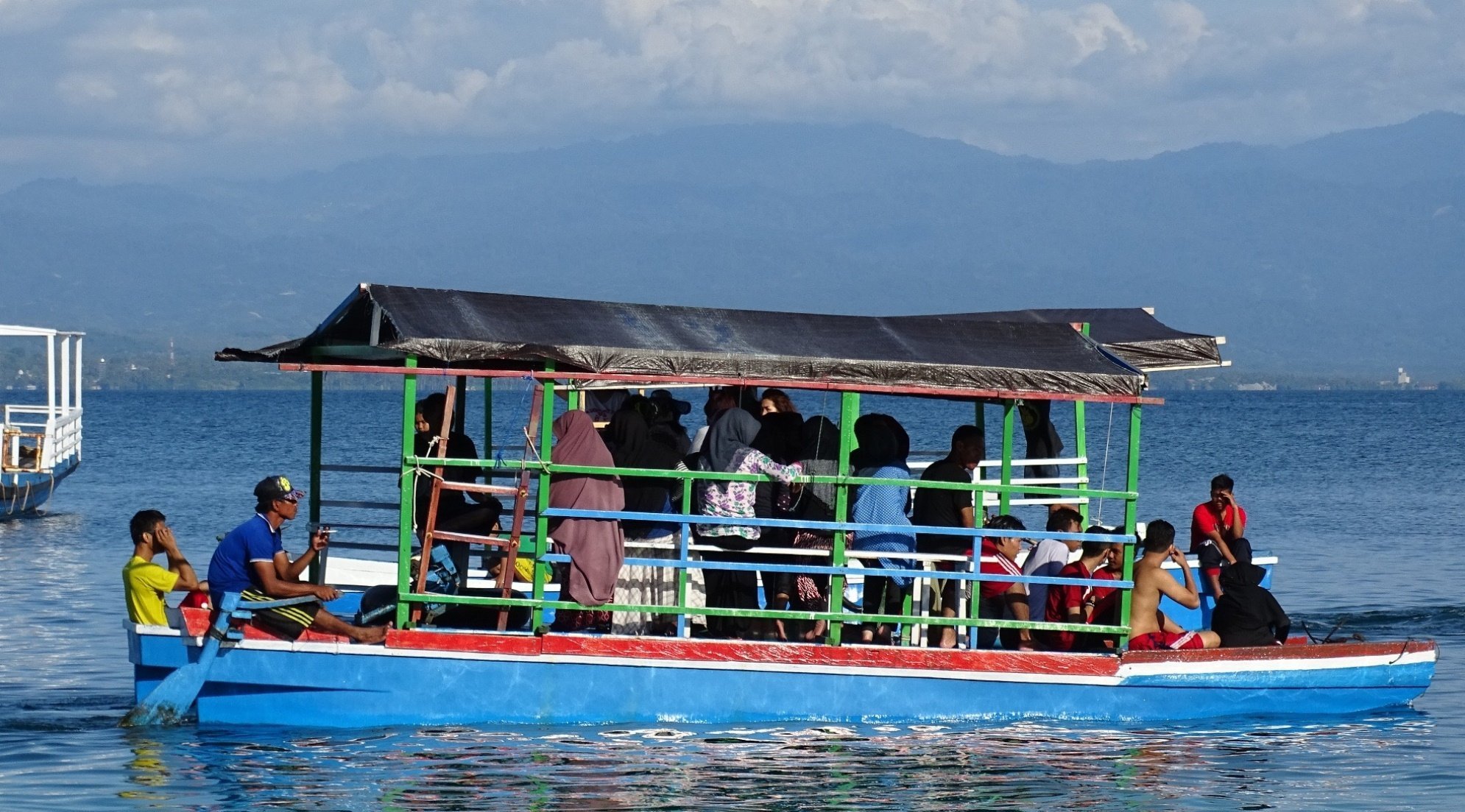 DonggalaThe former fishing village Donggala has a beautiful coastline at Tanjung Karang. Like at many other nice places close to a city, it’s on Sundays pleasantly crowded with local day and weekend tourists.From the tasteful Prince John dive resort you can make beautiful dive and snorkel trips. Tangkoko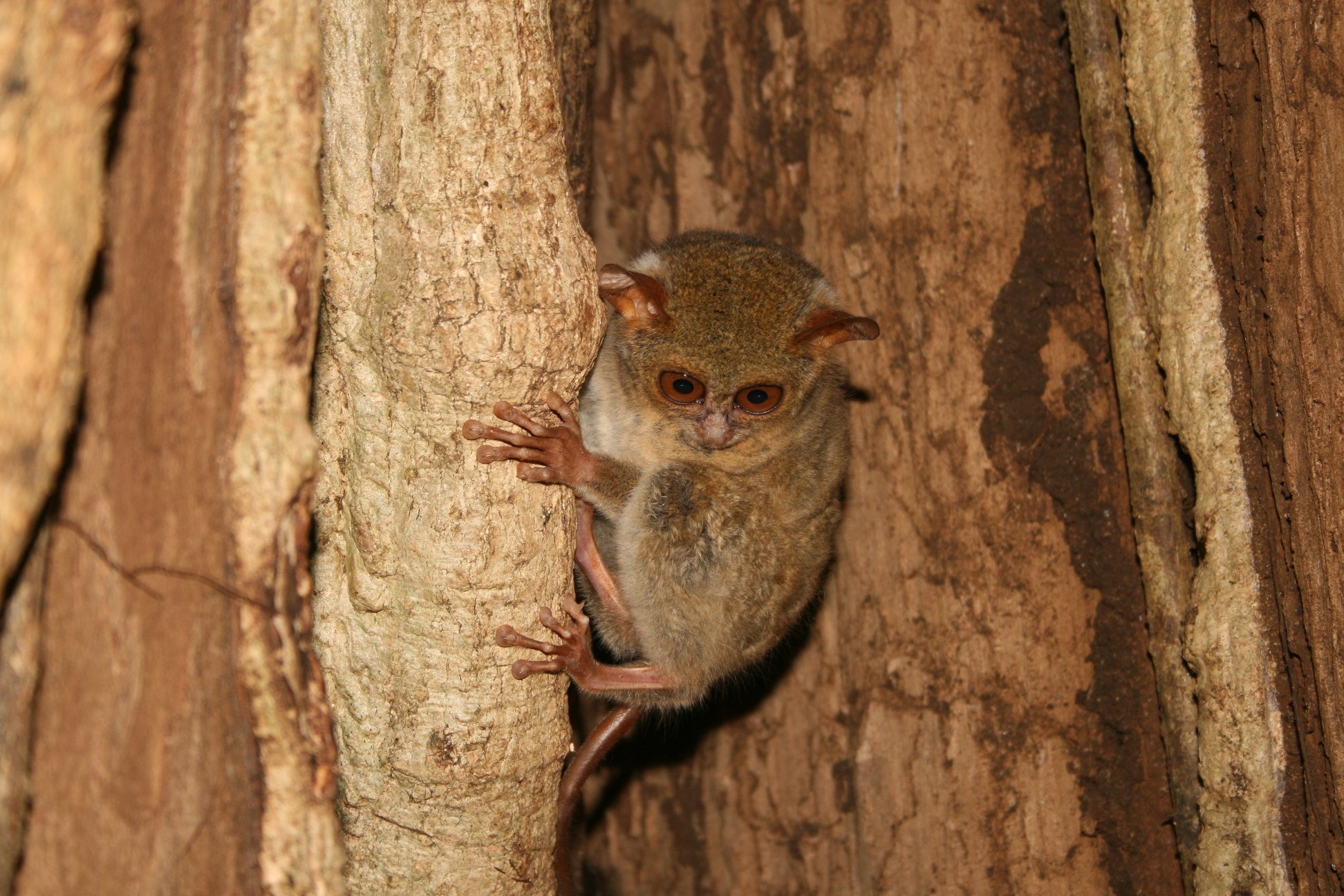 TangkokoThe Tangkoko Batuangus Nature Reserve is a nature reserve in Indonesia. It is located in the province of North Sulawesi on the island of Sulawesi. The area is 8700 ha and there are three mountains Gunung Tangkoko (1109 m), Gunung Dua Saudara (1361 m) and Gunung Batuangus (450 m).Source: Wikipedia |

